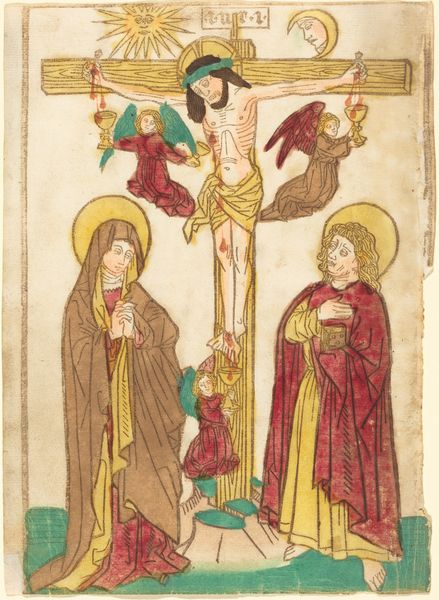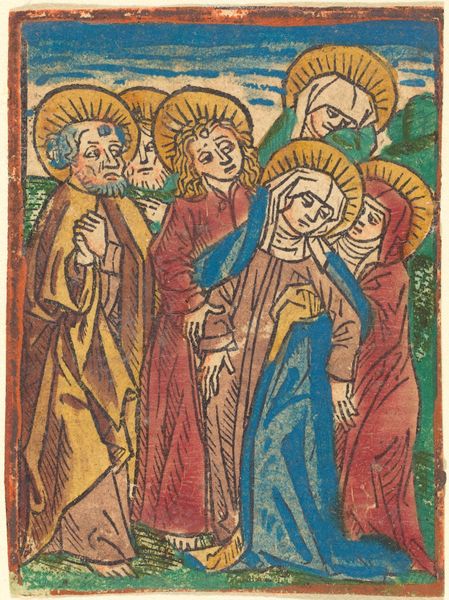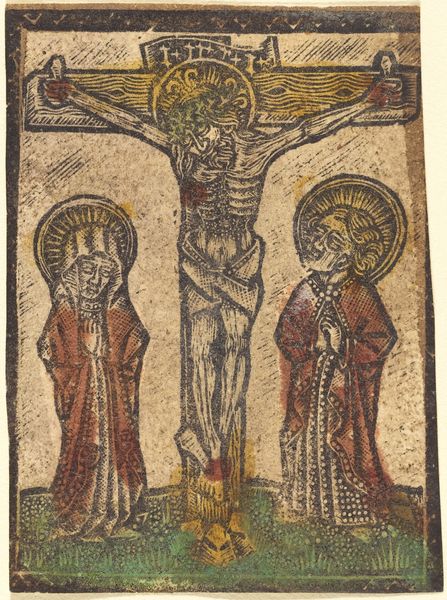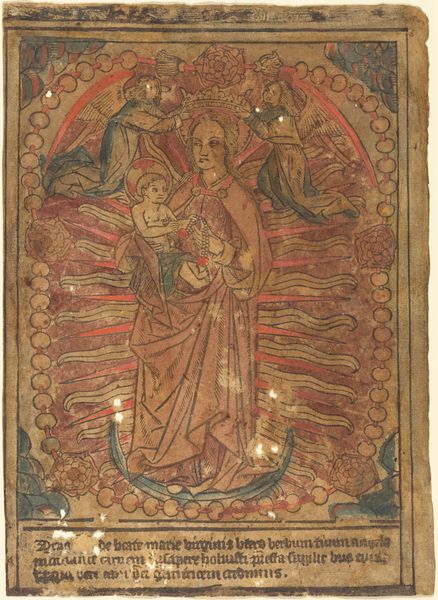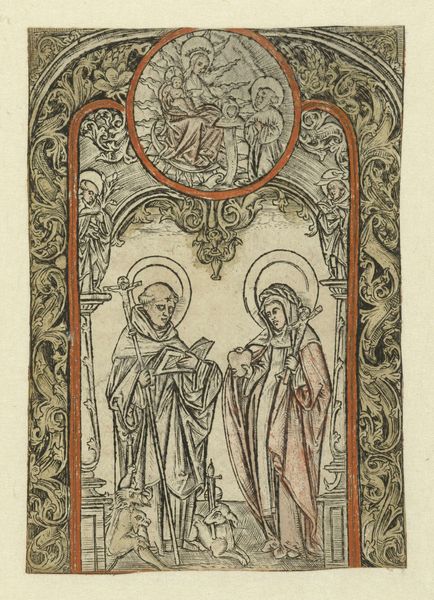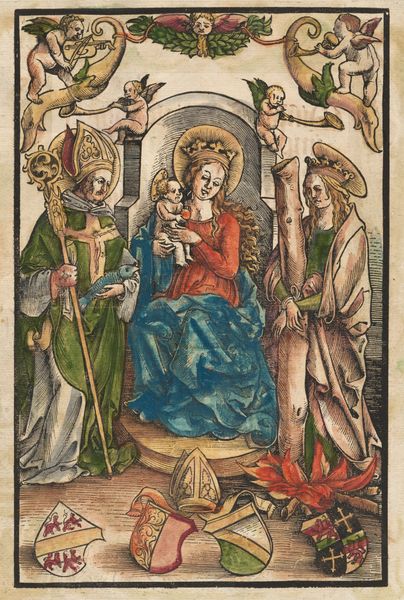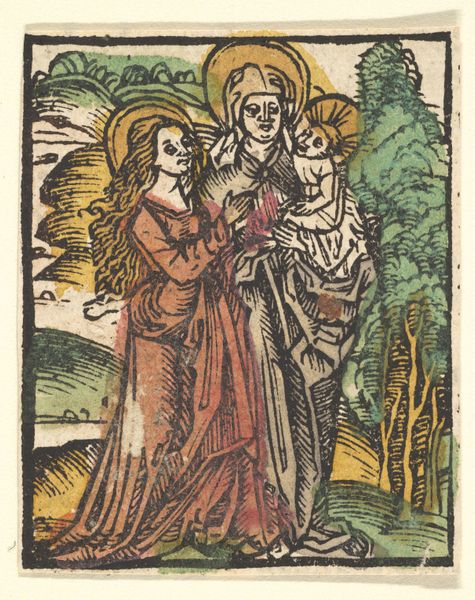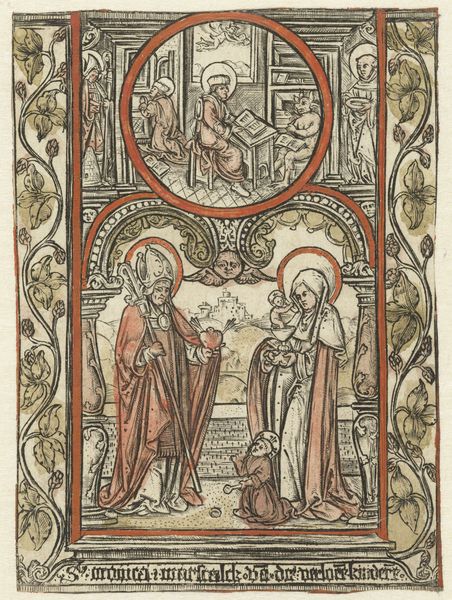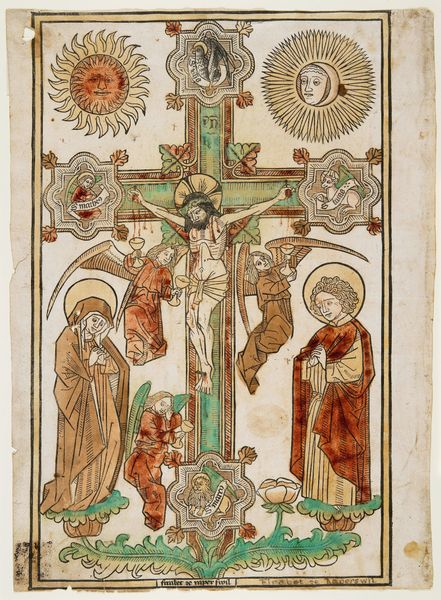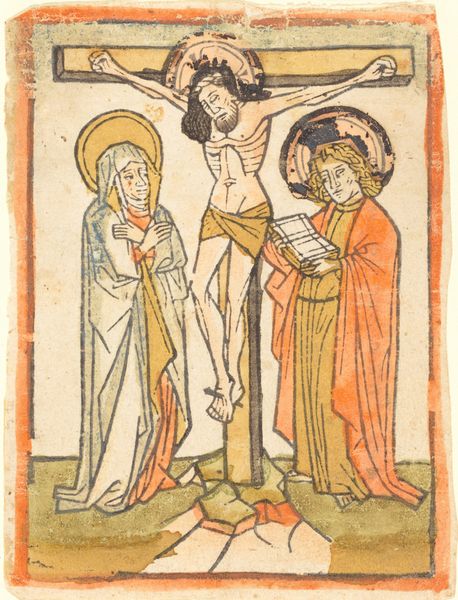
print, engraving
#
medieval
# print
#
figuration
#
history-painting
#
northern-renaissance
#
engraving
Dimensions: 3 15/16 x 2 15/16 in. (10 x 7.46 cm) (image)
Copyright: Public Domain
Curator: Look at this powerful image of "Christ on the Cross with Mary and Saint John," an engraving made around 1460 by an anonymous artist. Editor: It’s surprisingly delicate for such a weighty subject. The patterned background almost softens the scene, yet there’s also a strange tension, like the pattern is pressing in on the figures. What medium is this exactly? Curator: It's an engraving. Prints like this facilitated widespread distribution of religious iconography and shaped the spiritual imaginations of people in the late medieval and early Renaissance period. It also feels firmly rooted in the Northern Renaissance style. Editor: Engraving as a technique allows for incredible detail. Imagine the labor involved in carving all those tiny lines into the metal plate to create that intricate floral background! Also, notice the evidence of hand-coloring added after printing— a craft process bridging mass production and individual artistry. It suggests this wasn’t purely functional; there was a decorative element valued here. Curator: The floral patterns remind us of the Garden of Eden, lost and regained through Christ's sacrifice. The symmetry and arrangement create a sacred atmosphere. Mary and John's presence reinforces this - archetypes of grief and devotion in the face of divinity. It visualizes complex theology. Editor: It makes you consider accessibility, too. It’s art scaled for the masses – the printing democratizes access to religious imagery but each buyer also gets some handmade color added to individualize their possession of the image, bringing fine and industrial art production closer. How different is that from buying a poster today? Curator: Exactly. These were intimate devotional aids as much as they were works of art. They facilitated a personal connection to faith. Editor: Looking at this print now, it’s not just about the religious story, it’s also a document of evolving craft and early industrial innovation. Curator: Yes, both spiritual artifact and testament to a changing material world. Editor: A convergence of craft, commerce and religious expression, revealing fascinating insights on its time and society!
Comments
minneapolisinstituteofart almost 2 years ago
⋮
As Passion obsession developed, so did indulgences, which reduced one's punishment for sins. In the fifteenth century, people who prayed to Christ's body could earn 300 days per limb. Thomas à Kempis, whose simple writings helped shape late-medieval piety, penned fourteen separate prayers to Christ's various body parts.
Join the conversation
Join millions of artists and users on Artera today and experience the ultimate creative platform.
